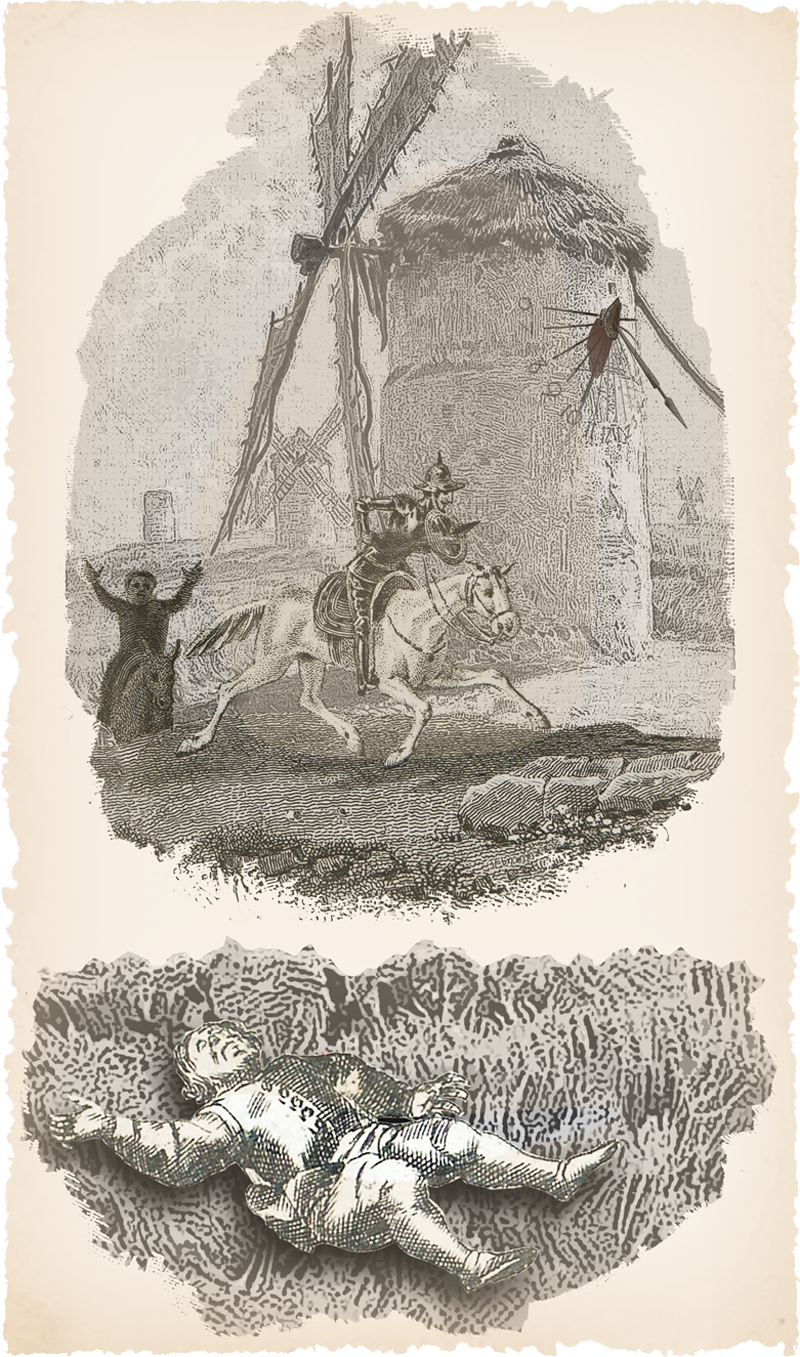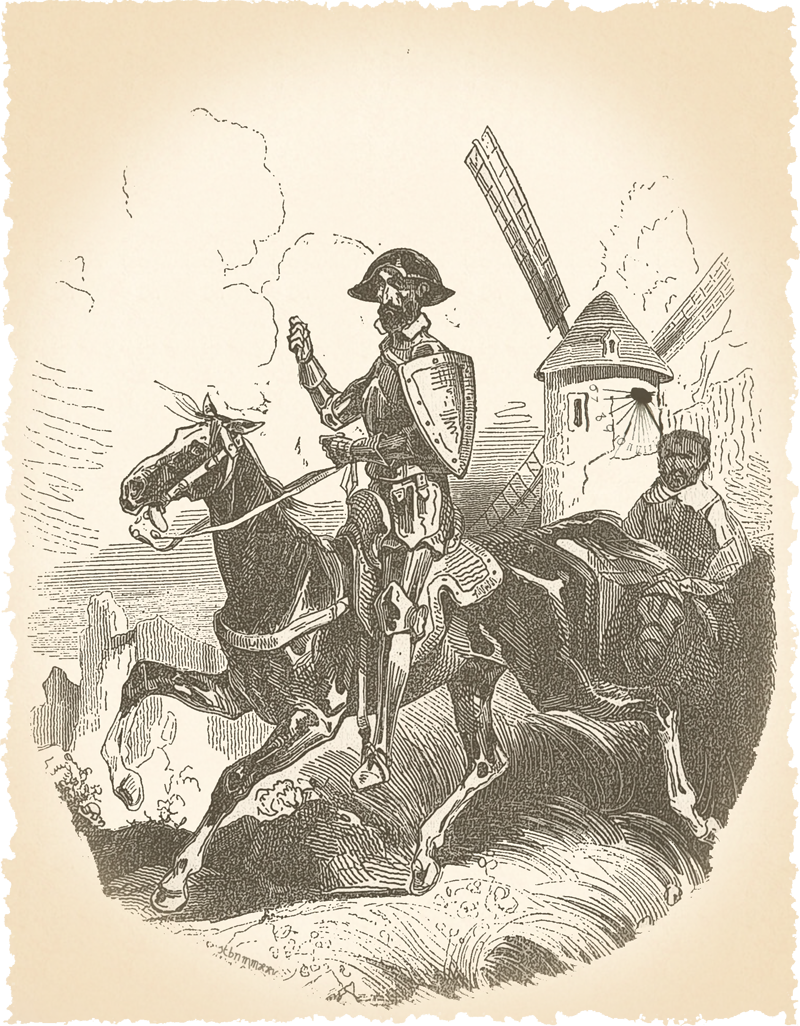El sueño de Sancho / Sancho’s Dream
Don Quijote is well known around the world. Well known is also his fight against windmills, which he considered to be hostile giants. Less known and not mentioned in Miguel de Cervantes’ immortal book is Sancho Pansa’s dream in the night after the windmill adventure. And this is what Sancho Pansa, lying beside his donkey, with his head resting on the donkey’s neck, dreamed:

“Don Quixote was approaching another windmill. Again, he called it a hostile giant. This time, Sancho Pansa fearlessly stepped into his master’s way, shouted ‘Stop, no further!’ and waved his big round hat. However, Don Quijote, bravely carried by Rosinante against the fancied enemy, threw his spear towards the target – and on its way the spear went through Sancho’s waved hat and pinned it to the windmill’s wall. The windmill stopped.
Don Quijote took this as giving up and ordered his companion to celebrate the victory with a ‘fiesta’. Now, while Sancho Pansa and his donkey were busy with getting wine, fruits, and ingredients for paella and tortilla from the next village, Don Quijote sat down and watched his defeated enemy. The spear still stuck in it, and its shadow slowly moved across the pinned hat. Don Quijote began to imagine lines, which the shadow left on the circle of the hat. He even numbered these lines, imagining they were signs of elapsing time …“ – and in this very moment Sancho Pansa woke up.
Next morning, he told his master of his dream, and Don Quijote wrote it down in his diary of adventures. But before Miguel de Cervantes could include it in his book, a raven had torn out this page, carried it through the air and lost it to the wind, who blew it into one of the marvelous Andalusian gardens. There the garden’s owner found it in bright sunlight. He was one of the many very wise men in Andalusia, and he instantly recognized the page’s value: the idea for a sundiaI! Accordingly, he built such an artwork. And so it comes that sundials have spread all over Andalusia, Spain, and far beyond – thanks to Sancho Pansa who dreamt it, to Don Quijote who recorded it, and to bright sunlight which helped to detect the paper in that garden!
Roland Müller
April 23, 2025, World Book Day, the 409th anniversary of the deaths of Shakespeare and Cervantes and the feast day of St. George, patron saint of all knights and horses and fearless fighter against dragons (or what look like dragons, like windmills).
.
Don Quijote es mundialmente conocido. También es famosa su lucha contra los molinos de viento, a los que consideraba gigantes hostiles. Menos conocido, y no mencionado en el inmortal libro de Miguel de Cervantes, es el sueño de Sancho Panza la noche después de la aventura del molino. Y esto es lo que Sancho Panza, acostado junto a su burro, con la cabeza apoyada en su cuello, soñó:

Don Quijote se acercaba a otro molino de viento. De nuevo, lo llamó gigante hostil. Esta vez, Sancho Panza se interpuso sin miedo en el camino de su amo y gritó: “¡Alto, no más!”. Y agitó su gran sombrero redondo. Sin embargo, Don Quijote, valientemente llevado por Rocinante contra el supuesto enemigo, lanzó su lanza hacia el objetivo; en el camino, la lanza atravesó el sombrero de Sancho y lo clavó en la pared del molino. El molino se detuvo.
Don Quijote lo interpretó como una rendición y ordenó a su compañero celebrar la victoria con una fiesta. Mientras Sancho Panza y su burro se afanaban en traer vino, frutas e ingredientes para paella y tortilla del pueblo vecino, Don Quijote se sentó a observar a su enemigo derrotado. La lanza continuaba clavada en él y su sombra se movía lentamente a través del sombrero prendido. Don Quijote empezó a imaginar las líneas que la sombra dejaba en el círculo del sombrero. Incluso numeró estas líneas, imaginando que eran señales del paso del tiempo… y en ese preciso instante Sancho Panza despertó.
A la mañana siguiente, le contó su sueño a su amo y Don Quijote lo anotó en su diario de aventuras. Pero antes de que Miguel de Cervantes pudiera incluirlo en su libro, un cuervo arrancó la página, la llevó por los aires y la perdió en manos del viento, que la arrojó a uno de los maravillosos jardines andaluces. Allí, el dueño del jardín la encontró a plena luz del día. Era uno de los muchos hombres sabios de Andalucía, y al instante reconoció el valor de la página: ¡la idea de un reloj de sol! En consecuencia, construyó semejante obra de arte. Y así es como los relojes de sol se han extendido por toda Andalucía, España y mucho más allá, gracias a Sancho Panza, que lo soñó, a Don Quijote, que lo registró, y a la brillante luz del sol que ayudó a encontrar el papel en ese jardín.
Roland Müller
23 de abril de 2025, en el Día Mundial del Libro, siendo el 409 aniversario de las muertes de Shakespeare y Cervantes y día de san Jorge, patrón de todos los caballeros y caballos y audaz luchador contra los dragones (o lo que parecen dragones, como molinos de viento).
.
Nuestro agradecimiento al autor alemán Roland Müller, gran admirador de la obra de Miguel de Cervantes… y de los relojes de sol, por haber compartido este artículo con los visitantes de nuestra web.
Las ilustraciones incluidas en este artículo han sido creadas por el autor de este sitio en base a dibujos que aparecen en diversas ediciones de Don Quijote impresas en los siglos XVII y XIX en Madrid, Barcelona y París.


